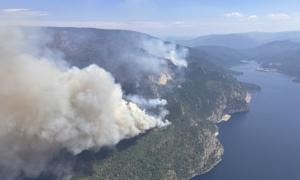The Link to Dementia
Dementia is an irreversible brain disorder that causes nerve cells to be destroyed over time. The result is a progressive deterioration in cognitive function that can lead to a range of uncontrollable behavioral side effects such as mood swings, lack of emotional control, and decreased motivation. World Health Organization data estimate that 55 million people suffer from dementia globally. It’s the seventh-leading cause of death worldwide.To examine the association between dementia and pollution, researchers looked at 27,857 men and women who were an average of 61 years old and living in highly polluted areas across the United States. Participants were drawn from a database used in a previous study, and data were collected between Jan. 1, 1998, and Dec. 31, 2016. None of the adults had dementia at baseline.
A total of 4,105 adults, or 15 percent, were diagnosed with dementia over an average follow-up of 10 years.
Agriculture Emissions, Wildfires Pose Highest Risk
After adjusting for sex, race, household income, socioeconomic neighborhood status, and other characteristics, results showed that total emissions increased the dementia rate by 8 percent. Other findings were that:- Agriculture emissions increased the dementia rate by 17 percent.
- Nonroad traffic emissions increased the dementia rate by 14 percent.
- Road traffic emissions increased the dementia rate by 11 percent.
- Energy coal and industry coal increased the dementia rate by 5 percent.
- Wildfires increased the dementia rate by 4 percent.
- Other energy-linked emissions increased the dementia rate by 2 percent.
- Other industrial emission increased the dementia rate by 1 percent.
“We then asked if the particles from each source are associated with dementia after accounting for other characteristics of person or place that might also put them at increased risk, as well as particles from all other sources,” Ms. Adar said.
When adjusted for both characteristics and the other particles, the link between increased dementia rate was only associated with agriculture (13 percent) and wildfires (5 percent). There was no significant link with any of the other seven particles.
Suggested Next Steps
“With the rapid aging of the global population and marked increases in the mean life expectancy around the world, the prevention of dementia has become increasingly important,” the authors wrote in the paper.“Our cohort study suggests that reducing PM2.5 [particulate matter] and perhaps selectively targeting certain sources for policy interventions might be effective strategies to reduce the burden of dementia at the population level, although more research is needed to confirm our findings.”
“Though we did not find that some particles like those of coal-fired power plants and traffic to be related to risk of dementia after accounting for particles of other sources, we know from the literature that they are linked to poor health through other outcomes like heart and lung disease,” Ms. Adar said. “Also, this is only one study, so our findings should be replicated by others.”


